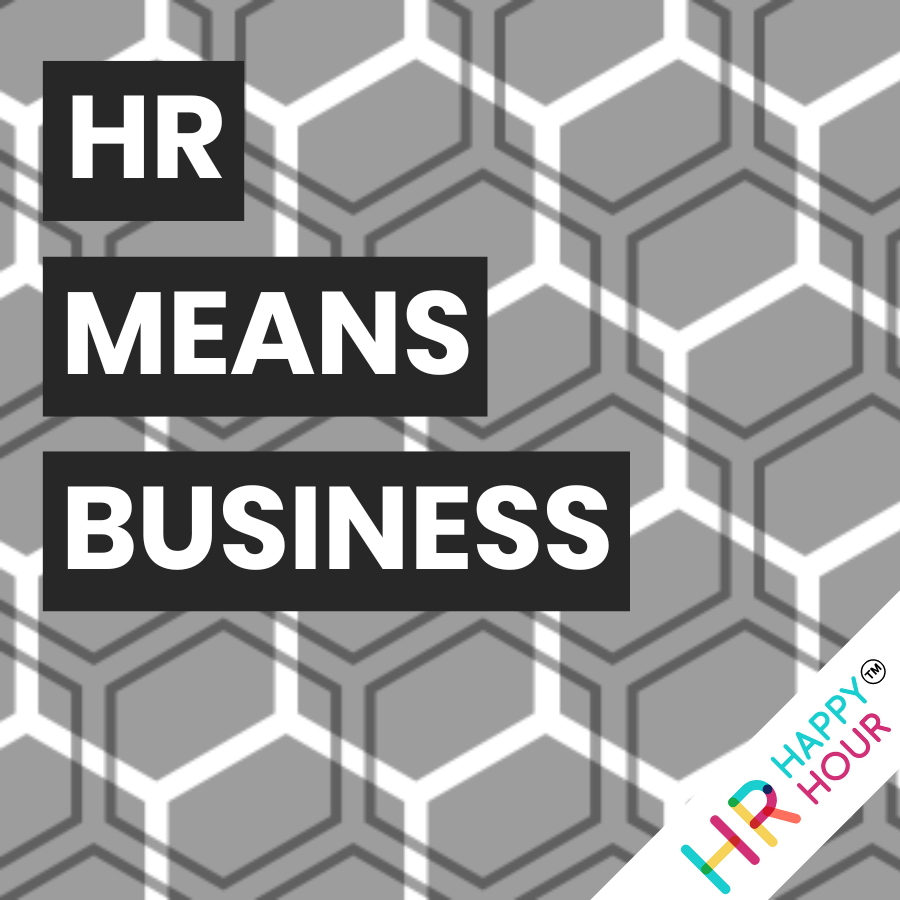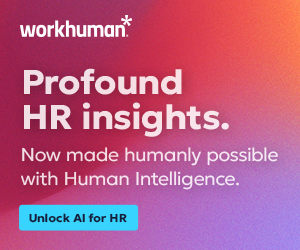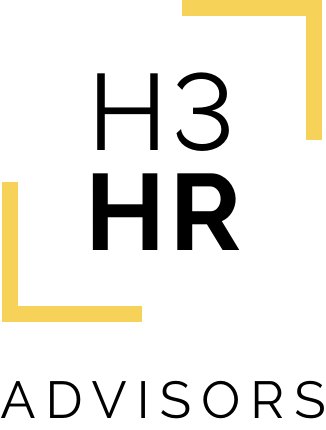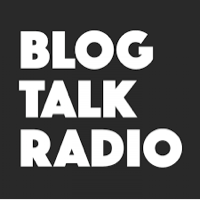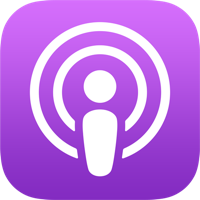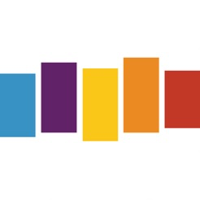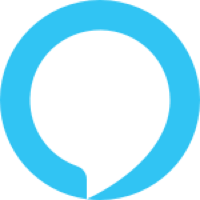Battling Burnout: HR Strategies for Employee Well-Being
Hosted by

Mervyn Dinnen
Analyst, Author, Commentator & Influencer
About this episode
Battling Burnout: HR Strategies for Employee Well-Being
Host: Mervyn Dinnen
Guest: Colin Minto, HR & TA leader
In this episode Mervyn Dinnen talks to Colin Minto, an experienced HR and TA leader, about his own experience of burnout and how he has been able to use this to advise, help and support HR & TA professionals to address their own and their teams’ wellbeing, and to be aware of the signs of burnout.
During the conversation they discuss:
- Colin’s personal experience of burnout
- Some of the early signs of burnout that HR leaders should be aware of so the can address it proactively
- How burnout impacts organisational performance as well as personal performance
- Practical steps that HR and TA leaders can take to create a supportive environment to help mitigate the risk of burnout
- The need to have open and honest conversations in the workplace about mental health to reduce stigma and encourage support
Thanks for listening! Remember to subscribe to all of the HR Happy Hour Media Network shows on your favorite podcast app!
Transcript follows:
Mervyn Dinnen 0:18
Hello and welcome to the HR Means Business podcast, which is part of the HR Happy Hour Network. I’m your host, Mervyn Dinnen. A lot of the narrative around employee experience at the moment is regarding supporting our people, their mental health, their well being, and also protecting them from potential burnout. I’ve been doing quite a bit of research around this lately. And today I wanted to speak to somebody who’s dedicated his career at the moment to helping HR people in particular, to understand burnout, what causes it, and how best to identify it and to help support our people. So it’s a great pleasure to introduce Colin Minto. Colin, would you like to introduce yourself to the audience and explain a little bit about what you do? And what got you started on this journey?
Colin Minto 1:10
Yeah, no, thank you, Mervyn. And absolutely incredible to be here with you. So the outcome into aka the burnout beater. And I specialize in supporting people to build their mental fitness and resilience and prevent burnout. So that’s either supporting individuals one to one, or I go into corporates and help support the whole organization, the whole workforce. And I do that through a various ways and means how I got into this, I’ve been a global head of talent acquisition, employer brand, HR, technology, EDI, and wellbeing for 14 years now. I’ve been in the recruitment HR space for about 24. But I’ve had a for a period of time, hidden agility. I’ve got OCD, anxiety, and ADHD. And for a very large chunk of my career all the way up to 2016. I have not really shared I didn’t want to share, I was one of those individuals that felt there was a real stigma associated with mental ill health.
Colin Minto 2:25
It’s completely battered me Mervyn, over the years, at points to catastrophic levels. And these are the things that you kind of journey on yourself and try and seek help for medical professions. But at the time where I started presenting with illnesses, this illness, I was 10 years old, and OCD wasn’t tremendously well understood. I was misdiagnosed. So I went through a whole lifetime really, of of hurt and pain. On the side of being successful in my professional career was an interesting one. So yeah, I’ve got to the point now where, because I have what I call a an unfortunate but fortunate skill set. I know what can make me break, I know what can get me there. I’ve done it many times, and I’ve recovered from it many times. So obviously, I have a bit of a knack of understanding what you shouldn’t do, and how you can build that strength fitness awareness. or dare I say coping mechanism and strategies to keep yourself away from the burnout bridge, as I call it, and to not go to those very, very dark places that we can all travel to if we if we if we push ourselves too hard, but I strongly recommend we don’t travel too because they are harrowing and dark so So I now dedicate my my life to helping others.
Mervyn Dinnen 3:53
So what are some of the early signs of burnouts that HR professionals should be aware of? Obviously in themselves, but I’m thinking kind of with the workforce, the people around them, what should they be looking out for and and, you know, to maybe begin to address it proactively?
Colin Minto 4:14
Yeah, I mean, it’s quite obvious change, really, if you’re looking at from in yourself, everybody knows when they’re feeling a little bit stressed, feeling a little bit overwhelmed, it presents itself then tiredness, irritability, mistakes can happen, fractured relationships. Sometimes it presents itself with a very difficult word to say but must go scalar skeletal or muscular skeletal issues with bones and afflict feeling waking up with feelings of dread anxiety, the things that you would describe as not your normal and the things that you know are happening to yourself and are quite quite obvious actually. And then certainly with regard to the workforce, it’s looking at those changes, they’re the changes in communication style, the changes in mood, changes in energy may be the changes in performance, and the quality of the deliverables, these are all things that you have quite obvious to you absence, etc, things like that. And I just want you actually get to that point, and you start to realize this, there’s something not quite right. It’s, it’s where you’re at a point where if you carry on much further, you’re going to have really, really big difficulties.
Mervyn Dinnen 5:38
And how can you or how would you advise identifying this maybe in others, so on the one hand, there’s people listening, identifying it for themselves, but you know, in hrs role, how might what might the signs be in an organization within a team around them, where people possibly are feeling like this, but maybe aren’t sharing or maybe haven’t identified it themselves?
Colin Minto 6:01
Yeah, it’ll be pockets of absence, and more frequent absence, it will be relationship difficulties between individuals and within teams, it will be the performance, the quality of the work, the attention has been paid different, I’ll say different input into communication and conversation, some people might switch from being, you know, life and soul of the conversation to being quite reserved, and withdrawn, and maybe withdrawing themselves from putting their hands up when they would frequently do so. So it’s those notable changes for I hate the word normal Mervyn. But they’re, you know, everyone’s got a norm, everyone’s got a normal, and it’s watching those, sometimes subtle, but also sometimes quite obvious changes from what you would normally expect an individual or individuals to be like, or to do or to deliver. And when you start to see that, then that is where you should maybe ask yourself some questions. Is everything okay? You know, is that individual or these individuals starting to present with the early signs of, of burnout?
Mervyn Dinnen 7:17
And what would you recommend, then if you identify that and think you know, that possibly it might be but obviously you don’t want you can’t just walk over to some somebody and say, Listen, let’s have a quiet word, I think you’re burnt out, or anything like that. So what how to best approach it from the beginning.
Colin Minto 7:38
So I’ve always found communication is the absolute key. And I kind of call it being someone’s business friend being being someone support. So whenever I fear that someone might be having difficulties, we always say in the morning, how are you doing? And the response to you know, the stiff upper lip is I’m fine. Yeah. But if you think that somebody isn’t quite fine, it’s maybe, you know, ask that question. How you doing? Yeah, yeah, I’m good. I’m okay. And leave it and then come back again, maybe with a little bit more frequency. And so that’s a Yeah, how’s it going with that particular project, you know, where you’re up to with this, just to slowly be a little bit more involved in their their life and a bit more involved in the communication, if they’re not going to open up. And I doubt they probably will, at that stage, because it is something that people necessarily fear opening up about, I believe showing some vulnerability shortly might be having difficulties might be seen as a weakness, you might want to go a little bit a little bit further. And I have found it to be really effective to show a bit of empathy and actually show a bit of vulnerability yourself.
Colin Minto 8:52
So I would say to someone that I was worried about, I’d say, crikey, I have a tough time at the moment, this work that I’m doing at the moment is a little bit challenging. Yeah. bordering on overwhelming. So I’ve laid back on myself. So by showing a little bit of vulnerability and showing that you’re okay to talk about the fact that you might be struggling a bit sometimes gives the other person enough confidence to go actually call him up be trusted, probably might be somewhat, I do want to talk about this because I’m feeling I’m feeling the effects of work or effects of life. I do want to talk to someone but who, when I see that maybe Colin is the person that I could open up to because he’s opened up to me, and again, it’s not okay, so I’m feeling a bit stressed at the moment. What about you? It’s a lie on yourself to try and dare I say, tease that conversation, start that conversation, but maybe center it around yourself a bit. And then when that person says Actually, yes, me too. Okay. Well, we should have a chat then. Should we do want to? Yes. Should you want to grab a coffee at some point? Yeah, it’s affecting a lot of us. Another way of Only things is probably a little bit more subtle is actually up in the columns around all the support solutions. You’ve got your EAP, employee Employee Assistance Program, your Mental Health First Aiders. Most, most definitely, if you are really concerned about somebody’s welfare, please please, please flag that to your Mental Health First Aid isn’t police blacked out to first day because they have gone through all the training and are equipped to be able to maybe take the conversation on for you.
Colin Minto 10:28
But if you feel that you want to be that person support, and I strongly recommend you should, you know, make sure you’re put signposting your whole team not singling people out but your whole team to the resources that are available. Maybe bringing in a bit of conversation hey, let’s we’re gonna bring in, we’re doing mindful mindfulness session we’ve got a person here is going to come in for half an hour and teach us how to do that. So you’re kind of giving everybody the opportunity to improve their mental health and well being open up that conversation. And you might find someone else that you don’t necessarily think he’s having difficulty might take the lead and say, Hey, I’m, I’m really feeling at the moment, life is tough. So they’ll stimulate the conversation, it might then become more of a community based conversation. So so lots of ways and means of doing it. But you’re right, not full on, hey, are you having difficulties because I’ve since that, you know, all these things are happening. That’s not the right way to go much more subtle conversation or show a bit of vulnerability, get get get more active in the space for everybody, and try and get that person to want to open up naturally.
Mervyn Dinnen 11:37
Are there any, I suppose practical steps HR people, HR professionals can take to generally, I suppose, create a supportive environment where we were talking about if you spot signs, but generally, I suppose one step before that kind of what what what would you advise to, for somebody who maybe is getting a bit concerned about the team around them on department around them? What kind of steps can they do to have this kind of, I suppose supportive to let people know it’s there?
Colin Minto 12:08
Absolutely. So I won’t turn this into a sales pitch moment. But there’s a raft of things obviously, I and others can support organizations with. But the key thing for me, however, you want to call them, employee resource groups, or employee led networks are really, really wonderful. So if you can find a number of people that are passionate about any cause, but let’s talk about mental health and wellbeing here. And then you put a plan together, find a senior stakeholder in the organization that will sponsor it. So this is lead from the top you create an employee resource group, employee led network that focuses specifically on pulling people together to have the conversation around mental health, mental well being burnout, because then it’s an it’s an official thing, the company has invested and provided the support to a group of individuals to take this conversation forward for it across the entire workforce. And what you’ll find actually, when you talk about this as a proposition within the organization, there’ll be a senior stakeholder that will quite happily put their hand up and say, Actually, it’s me, I’ve got depression, or I’ve suffered from anxiety, I had major trauma when I was younger, I really want to leave this one, thank you very much. And I want to support it and champion it at the highest level, then you have a group of people that are within there that are the administrative and support driving force of it, to put on the events, to bring people together to get the communication out there.
Colin Minto 13:41
Equally, really, really push hard on all the resources that most organizations will have anyway, what I do is I help organizations identify what within their employee assistance program are the areas that are affecting people most when it comes to their mental health and wellbeing. Again, I won’t get into a sales pitch on that. But that’s one of the starting points. And then when you realize that there’s three to five things that are probably impacting most across your workforce, that’s where you can go to your ATP, which is which are great, but they’re very, very wide. I do worry that sometimes they’re underutilized. And most people would criticize them for not being utilized enough. But that’s because I think they’re so wide. And if you can actually start to look at what are the three to five things that are really impacting on our workforce right now. And take all the resources and elevate the resources and promote the resources for those particular areas first, and as a priority and put on events around them. And that is where you start to capture a lot of people that will then think this is great. This is this is really good at my organization. To do that. I am going to engage in this stuff. I am going to talk to people in this employee resource group, this employee led network because it is me and I feel safer and more comfortable talking about it because the company is elevating this, it’s, it’s not singling it out to me. It’s elevating this for the whole organization, therefore, it’s a priority. I have that comfort. I’m going to get involved. I’m going to start opening up, I’m gonna start talking.
Colin Minto 15:19
I think those, those are the very first steps naturally, if you’ve got Mental Health First Aiders in the organization, they will be the eyes and ears looking out for you. If you haven’t, then I strongly recommend you do. And it’s it’s really about making the conversation comfortable, normal, acceptable, and showing those examples of people aren’t great example that I’ve achieved on the backdrop of being mentally ill and being completely savaged by a condition. But I’ve still achieved it’s like running the four minute mile when people see Collins opened up about it. Mostly that before that Roger Bannister, he did it once ran four minutes. And then all and sundry did it about a week later. So So it’s about getting that kind of conversation started and making people feel comfortable about it.
Mervyn Dinnen 16:10
It’s interesting, because what I was thinking, while you were speaking, there is about how that how I suppose HR people within the business can actually create almost a culture where open and honest conversations about things like mental health can be the norm and you say Mental Health First Aiders employee resource groups, I know a great support for things like this. Are there any other things tips or advice you would give about just creating the environment that fosters kind of open and honest conversation?
Colin Minto 16:45
Yeah, so I have done this for a lot of organizations where I’ve gone in as a third party, and told my story, my whole journey about OCD, how it savage me how it reduced me to a gibbering wreck and tears because it’s so traumatic and difficult and, and all the, you know, the the elements around what is OCD? Why have I got it? You know, how does it manifest itself? How does it switch ON switch off that really authentic kind of, Wow, I wasn’t expecting to hear that level of detail. So bit of thought leadership thought stimulus to get somebody to say, right, this is what it actually looks like. So when I talk about OCD, that is my burnout, I become symptomatic of a mental health condition as my burnout. If I didn’t have my mental health condition, I would probably have fallen over with what you were classed as traditional burnout. So burnout is a Ctrl, Alt Delete the timeout, that busy your brain in your body says I’ve had enough. When I get to that point, my OCD triggers my anxiety disorder triggers. And I think I’ve done a really slippery path there. So to get somebody to talk really openly about this a bit shocking or to be fair, does two things. Really, the first thing is actually quite a euphoric engagement and situation, the feedback that I get, and that the my clients get is one of Wow, thank you. I cannot believe we’ve just had that conversation. It doesn’t just have to sit with mental health and well being I recommend speakers for all manner of conversations. One of the most recent that I’ve been championing is, is menopause, and perimenopause. It’s, you know, to get that learning that education out.
Colin Minto 18:39
So you get people in to stand up there and say, Wow, this is what it looks like. Everyone is automatically a little bit Oh, my god, wow, we aren’t we are having this conversation then. Right? Good. A lot of people, they reach out to me individually. And I then tend to support them behind the scenes, because they want to keep it private. Or they’ll open up internally into the organization, you surround that talk with the data, which I alluded to earlier that I can I can serve this across the workforce, but equally you surround it with all of the support or the ongoing conversational points. So once you have that talk, which is kind of a catalyst to get everyone going, right, we’re doing this are we great, then it’s to provide what if you’re having a difficult if it like the end of a an EastEnders show where they they hit something quite hard, don’t let in they say, if you’re having difficulty with this, this is where you go, these are the resources you can have. And it’s okay not to be okay, etc, pointing to it. But then that’s, that’s the catalyst for standing up your ERG, your employee led networks, to then capture that interest. And that that wave of emotion that will be there to then give that the juice and the energy and the purpose that it needs to go on and thrive and keep that conversation going and elevating it and expanding it.
Mervyn Dinnen 19:59
I should at this point for listeners from outside the UK, explain that EastEnders is a very popular soap opera, which deals with a number of issues of the day and exposes them a lot and and through drama analyzes them. But at the end, they will then give you links to other resources, which is you don’t need the soap opera in HR, you just need to the open conversations and the links. So I suppose to kind of frame it. And not to scare HR professionals listening, but what are they? What are the potential impacts of not addressing it adequately?
Colin Minto 20:42
There are a lot more than that people tend to focus on, I think it’s first, really key to mention that HR are the people looking after the people. Right. So this is an element of drinking your own champagne here, we need to make sure that our HR teams professionals are optimally fit mentally and physically to be able to support other people. So so that’s a critical point there. When you have individuals that are burnt out, and this the latest statistics are on a always on burnout assessment across the globe. And the latest statistics are saying that 11% of the workforce are burnt out, and a further 11% are well on their way to burning out. So that’s potentially 22% of the workforce that are being impacted. That impact is a number of things the the obvious absence, you’ve got the the element of all that the word has completely slipped my mind brain, we’ll come back to that. You’ve got the the reduction in performance, you’ve got the accidents, that might happen because people are distracted. You’ve got all of the, I suppose elements that mistakes can be made, and therefore big or small incidents can happen within the organization. Some can be quite catastrophic. And unfortunately, can be quite newsworthy. So you can have those, you know, those major PR or reputational damage issues as well. One of the other major concerns that I talk to organizations about and try and educate them on is really deep into those financial risks and those both business risks. As you said, we don’t scare people.
Colin Minto 22:40
But if you go back to the Barons bank situation with Nick Leeson, he actually in his defense said, I was so stressed, I started chasing the numbers, because I needed to write the wrong as it were, and therefore it escalated. You’ve got the situations where people are so distracted, they’re doing something they have a an incident, it can be quite a severe insulin, and therefore tribunals come into play. And then the business I can call, you’ve got the situation that was very, very big a few years ago with France Telecom, where the chief executive and some of the other executives went to prison, because they pushed the organization to go through a change process. So hard, the suicide rate within the organization increased. And therefore, the law was we got involved in the investigation showed that they were responsible for corporate manslaughter, therefore, unfortunately, for the individuals concerned getting a catastrophic and everybody else around those individuals, family, friends, and loved ones, but equally, if you want to then dial it into a commercial impact. There’s no corporate manslaughter charges that are being pursued by courts, where people are pushing people to hell and leading them to have, you know, severe severe difficulties. So there are there are a number of things it’s not just about engagement. It’s not just about general well being we all know that happy workforce is a productive workforce, we know that if you invest in your workers, they will credit you for that, therefore, they will stay so you solve retention to a certain extent. They will work hard, therefore you get performance. They will tell everyone how awesome you are as an organization, therefore, you’ve got your employer brand and your EVP and you’ve got your your attraction piece sold. But beyond that, so many reasons to support your people to be optimally fit physically and mentally. If he actually died it back to we employ X amount of people. We employ them for a reason because they can provide value. If there any way shape or form or come any way shape or form compromise for doing that it’s in the company’s interest to help them get up to their A game. Now, equally, if you’ve got 100 people and 22% of them aren’t performing optimally, you might have to recruit an extra five, let’s say, maybe an extra 10 people to cover the lack of productivity. But of course, if everyone’s productive, you don’t need as many people. So, so many, many reasons for for doing this well, and so many difficulties for for not doing so.
Mervyn Dinnen 25:35
Colin, it’s been great to be able to talk to you about this is a hugely important topic. And I think one increasingly as I said at the beginning, I think HR people need to be aware of need to be on top of how can people I suppose, contact you or keep up to date with your latest kind of, you know, what’s your research and your writing and everything?
Colin Minto 25:57
You brilliant? So, the word was presenteeism, by the way that I missed because of my ADHD brain I’m always three or four steps ahead and it just gone so sometimes my brain is mad but I’m all over the socials. So forward slash Colin Minto after all the LinkedIn stuff so linkedin.com forward slash in forward slash Colin Minto you’ll find me on Tik Tok, Facebook, YouTube you’ll find me on Instagram and under the burnout betta drop me an email Colin dot Minto at do it differently dot club.
Colin Minto 26:36
But most people will track me down on on LinkedIn connect with me have a conversation with me, I always offer one first conversation with anybody’s is free, I love to get this message out. I love to talk to people about it. Because when I do, it really resonates even with the mind of the individual that I’m speaking to or on behalf of the organization because they will know that be close to some individuals that might be having difficulty. And I’ve helped individuals a C suite level. I’ve helped large organizations, one that I’ve been working really closely with which is very public. In the run up to the general election is the Liberal Democrat Party, who invited me to support the whole workforce to build mental fitness and resilience, up to arguably the most pivotal moment in a political party’s existence, a general election. There’s more elections throughout the year, but the general election is the biggie. And it knew that there were going to be people that will be pushing themselves hard. And the organization was asking them to work hard. So that’s the time really to say, Okay, let’s put all of our resources in, they got ton of resources, and I complimented and supplemented them with what I do.
Mervyn Dinnen 27:54
It’s amazing. Let’s see how they do on the big day.
Colin Minto 27:56
Well, let’s see how they do or how they’ve done. Yes.
Mervyn Dinnen 27:59
Well, by the time people listen to this, it’d be how they did Yes, yeah.
Colin Minto 28:04
I’m not gonna say like, if they’ve done pretty well, it’s all on me. And if they did really badly, they didn’t listen. It’s it’s genuinely the message to all organizations, if you’ve got it just in general operation, obviously, it’s really important to do this. But if you’re going into lots of change, if you’re going into if you’ve got major contracts, you’ve got to deliver with financial penalties, but they’re not doing so well. You’re, you’re building up to an exit, and you want to get your valuation, then, you know, we know that organizations ask a lot of their people during those times. So just like a marathon runner wouldn’t run up with a pen and turn up with a pair of shoes and not trained in advance of it and expect to run really fast, you know, around a marathon? Can you expect your people to, you know, to run a short marathon when you haven’t necessarily given them an equip them with the resources to do so. I’m not blaming employers here, then we are our own worst enemies as human beings. We do pile a lot of stuff on ourselves anyway, with demands. I mean, I’ve worked with a model of 15 drivers of human comfort and distress. One of those is, is demands. We’re just as guilty at home as putting stuff on ourselves as we are in work.
Colin Minto 29:17
So it’s not big bank corporates here, but corporates can have a major influence on people’s education understanding to keep themselves fit, both in their private lives and in their professional lives. So they perform optimally in both. And that’s really the key to this. This is why you get a really big hit on employer brand, retention and performance. If you are the organization or the the source or providing that knowledge and support for people that not only optimize themselves in work but optimize themselves, in home in their relationships and their families, etc. You get the credit for that. So another huge bonus for all corporates taking the lead.
Mervyn Dinnen 30:02
Okay, Colin, it’s been a pleasure. Thank you for your time.
Colin Minto 30:07
Thank you very much.
Transcribed by https://otter.ai
Talk to us
If you want to know more about any aspect of HR Happy Hour Media Network, or if you want to find out more about a show topic, then get in touch.

